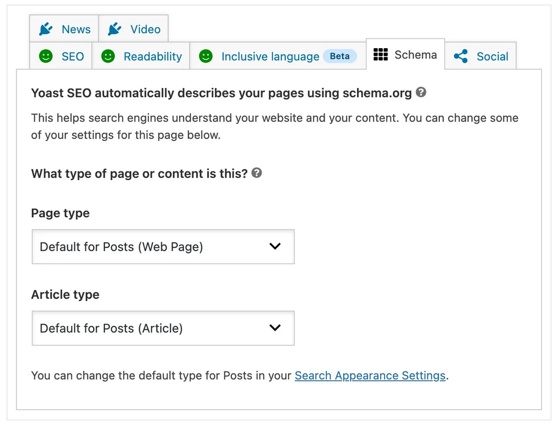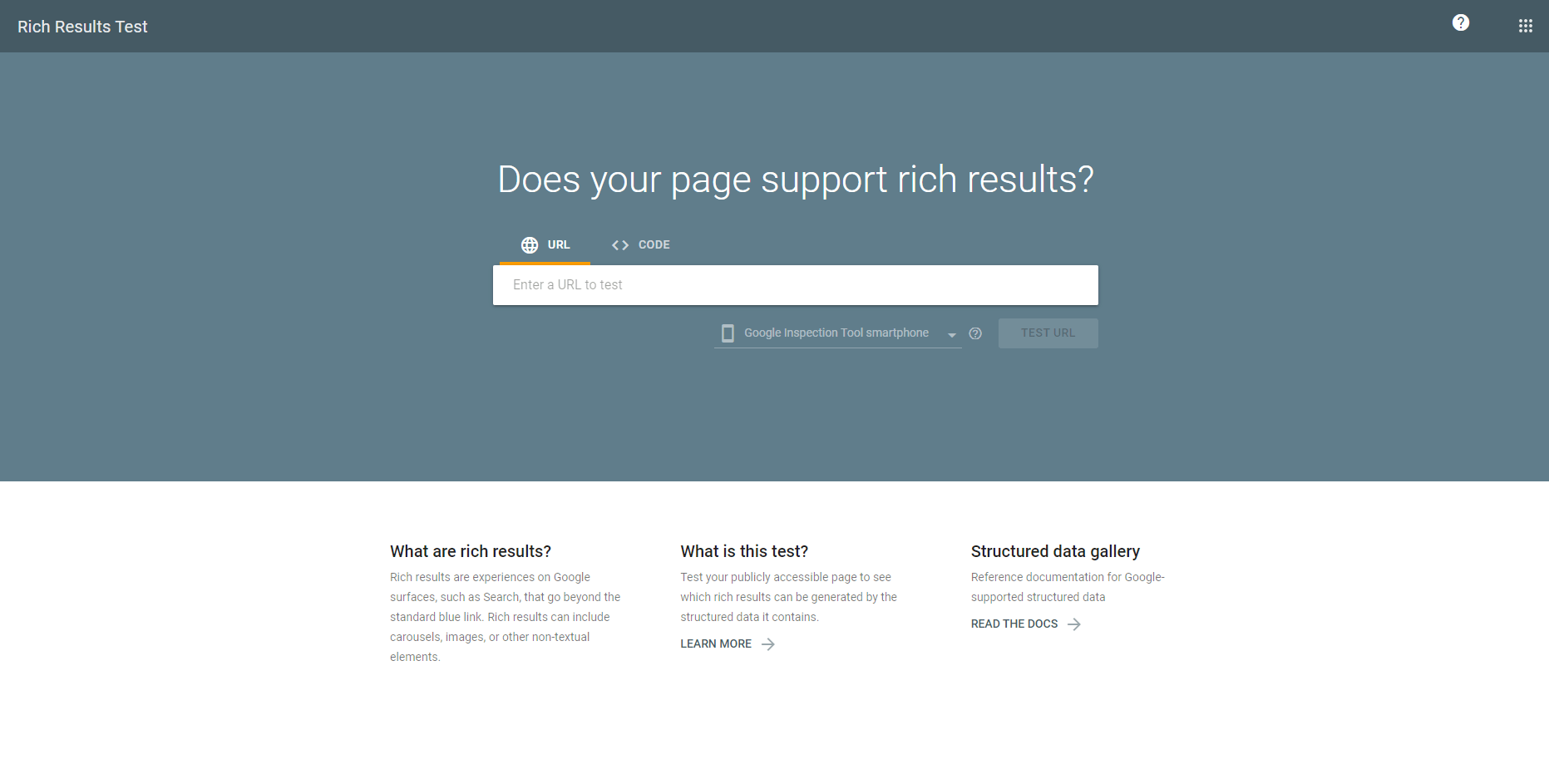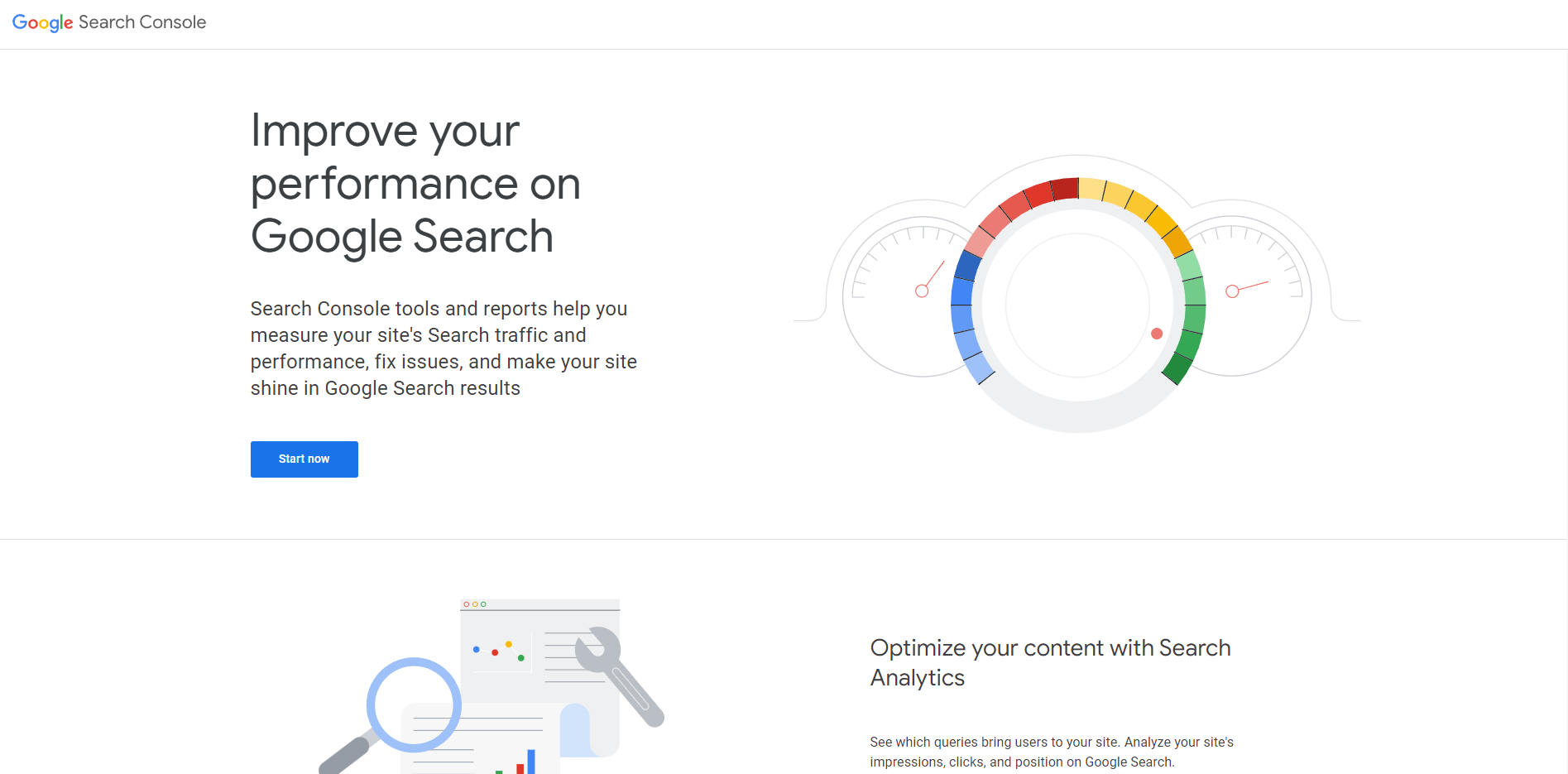Are you pouring time and energy into SEO, yet still struggle to stand out in search engine results?
If so, you're in the right place!
Many websites, despite having well-optimized content and backlinks, struggle to climb the rankings.
What if you’re missing out on a critical tool—one that helps search engines understand and showcase your content better?
That tool is structured data.
While many businesses overlook it, those who implement structured data see enhanced visibility, richer search results, and increased click-through rates.
In this post, you’ll learn:
- What structured data is
- Why it’s a game-changer for SEO
- How to implement it on your site for maximum visibility.
Ready to boost your search engine performance? Let’s find out how...
What is Structured Data?
Structured data is a standardized format that helps search engines understand and organize the content on your website.
Think of it as a "translator" between your website’s content and search engines like Google, allowing them to present your information more clearly in search results.
Structured data acts as a translator between your website’s content and search engines, enhancing your site's visibility in search resultsClick To Post OnWhen search engines can easily interpret your site’s data, they’re more likely to display it in an enhanced format—such as:
- Rich snippets
- Knowledge panels
- Featured snippets
Instead of just showing a basic blue link and meta description, Google might highlight product prices, customer reviews, event dates, or other key information directly in the search results.
In essence, structured data helps search engines “read” your content more effectively, making it easier for them to connect you with the right audience.
It’s a crucial SEO tool that can give you a significant edge over competitors who aren’t utilizing it.
But why is structured data so important for SEO?
Let's take a closer look...
Why You Should Use Structured Data
Structured data is a game-changer for SEO because it gives search engines a clearer understanding of your content.
When search engines know exactly what your content is about, they can display it in more visually engaging and informative ways, such as rich snippets and featured snippets.
These enhanced results stand out from the standard blue links, making your site more appealing to users.
Implementing structured data can lead to rich snippets, making your search listings more engaging and informative to usersClick To Post OnFor instance, if you run an e-commerce site, structured data can showcase product prices, availability, and star ratings directly in the search results.
If you're a blogger, structured data might display your article’s publication date, author, or a short summary in the search preview.
This extra information helps search engines understand the relevance of your content, increasing the chances of attracting the right audience.
The result?
Higher click-through rates (CTR) and better engagement.
Users are more likely to click on search results that offer them more context upfront.
And more clicks not only bring you more traffic but also send positive signals to search engines, further boosting your rankings over time.
Ultimately, structured data allows you to rise above competitors who aren’t leveraging this powerful SEO tool, giving your website a higher chance of standing out in a crowded online space.
Types of Structured Data
There are several types of structured data formats that can help you communicate effectively with search engines.
Each serves a specific purpose depending on your website’s content and how you want it displayed in search results.
Let’s explore some of the most common formats:
1. Schema.org Markup
Schema.org is the most widely used structured data vocabulary, supported by major search engines like Google, Bing, Yahoo!, and Yandex.

It provides a shared set of tags (or "schema") that you can add to your HTML to help search engines better understand your content. This markup can describe everything from articles and products to events and recipes.

A product page using Schema.org markup might display essential details like price, availability, and customer reviews directly in the search results.
This added information makes your listing more attractive to potential customers and increases the chances of them clicking on your link.
2. JSON-LD
JSON-LD (JavaScript Object Notation for Linked Data) is another popular structured data format, particularly favored by developers.
One of the key advantages of JSON-LD is its simplicity—it keeps your structured data separate from your HTML code, making it cleaner and easier to manage.
You can insert JSON-LD within the head or body of a webpage, and search engines can easily extract and interpret the data.
Google even recommends JSON-LD as the preferred method for adding structured data.
It’s ideal for e-commerce sites, blogs, and local businesses that want to make their content more visible in search results without cluttering the code.
3. Microdata
Microdata is another method of embedding structured data within your HTML.
Unlike JSON-LD, microdata is placed directly in the HTML tags, which can make the code more complex to manage, especially for larger websites.
However, microdata is still useful for marking up specific elements on your site, such as reviews, articles, or events.
While microdata is a bit more labor-intensive to implement compared to JSON-LD, it’s still an effective way to provide search engines with the additional context they need to rank and display your content more prominently.
Use Cases of Structured Data
Structured data is not one-size-fits-all. Different industries and types of content can benefit from specific structured data formats. Here are some examples:
1. E-commerce
Product pages can display prices, availability, and reviews in search results, making listings stand out and boosting CTR.

2. Blogging
Blog posts can show publication dates, author information, and article summaries, helping you attract more readers.

3. Local Businesses
Display key business information such as address, phone number, and opening hours directly in search results, improving local visibility.

Benefits of Using Structured Data
Structured data isn't just a technical tweak—it can have a direct and powerful impact on your website’s visibility and performance in search engines.
Let’s look at the key benefits you can expect when you implement structured data.
1. Enhanced Search Results
One of the most significant advantages of structured data is its ability to produce rich snippets in search results.
Rich snippets include extra details like star ratings, product prices, event dates, and even images, making your listing more eye-catching and informative.
A recipe page with structured data might show cooking time, star ratings, and an image of the dish right in the search results.  These enhanced results make your content stand out from the sea of plain blue links, increasing the chances of attracting clicks.
These enhanced results make your content stand out from the sea of plain blue links, increasing the chances of attracting clicks.
2. Increased Click-Through Rates (CTR)
By providing more information upfront in search results, structured data improves your click-through rate (CTR).
Users are more likely to click on a result that offers them valuable details at a glance, such as reviews, prices, or author information.
- Studies have shown that rich snippets can boost CTR by as much as 30% compared to standard search results.
More clicks mean more organic traffic to your website, and as your CTR increases, search engines take notice, which can further improve your rankings.
3. Improved SEO
Structured data helps search engines like Google understand your content more thoroughly, leading to better indexing and higher rankings.
When search engines know exactly what your page is about—whether it's a product, article, event, or service—they can rank it more accurately for relevant search queries.
Additionally, structured data increases your chances of being featured in special search results like Google’s Knowledge Graph, featured snippets, or even voice search results, which can drive even more traffic to your site.
With search engines placing a higher emphasis on delivering rich, contextual results, structured data is becoming essential for improving SEO performance.
Step-by-Step Guide to Implementing Structured Data
Implementing structured data might sound complicated, but it’s actually a straightforward process once you break it down.
By following these steps, you can help search engines understand and display your content more effectively.
Step 1: Choose the Right Type of Structured Data
Start by identifying which type of structured data best fits your content.
- Product pages might need structured data for pricing and reviews.
- Articles or blog posts could benefit from structured data for author information, publication dates, and article summaries.
- Local businesses can use structured data to highlight their address, opening hours, and contact details.
To get started, visit Schema.org to browse through various schema types and find the right one for your website.
Schema.org is the most widely supported vocabulary by major search engines like Google, Bing, and Yahoo.
Step 2: Add Markup to Your HTML
Once you’ve selected the appropriate schema, it’s time to add the markup to your site.
The most commonly used formats are JSON-LD, Microdata, and RDFa, further described as follows:
- JSON-LD is the easiest to work with and is Google’s recommended format. You can simply insert it as a block of code within the <head> section of your webpage without modifying your HTML structure. Recommended.
- Microdata embeds directly into the HTML tags, which might clutter your code, but it still offers detailed control over specific elements. However, it's less well supported.
- RDFa is another option but is more complex, mainly used for more advanced use cases like e-commerce or publishing.
If you’re using a Content Management System (CMS) like WordPress, there are plugins (such as Yoast SEO or Schema Pro) that can help automate the process and eliminate the need for manual coding.

You might also like to use a tool like Google’s Structured Data Markup Helper to make the process easier.
Step 3: Test and Validate Your Structured Data
After implementing the structured data, you need to test it to ensure it’s set up correctly. Use tools like:
- Google’s Rich Results Test will show you how your structured data might appear in search results.

- Schema Markup Validator (available on schema.org) helps check for errors and ensures that your data is valid.
These tools will point out any issues, such as missing fields or incorrect markup, so you can correct them before your structured data goes live.
Step 4: Monitor Performance
Once your structured data is live, use Google Search Console to monitor how it’s performing.
Search Console provides insights into which of your pages are triggering rich results and how often those enhanced results appear in search listings.

You can also track changes in impressions and click-through rates (CTR), allowing you to see the direct impact structured data has on your website’s search engine visibility.
Best Practices to Maximize the Power of Structured Data
To get the most out of structured data and maximize your SEO gains, it’s essential to follow some key best practices.
Implementing structured data properly not only enhances your search results but also ensures long-term benefits like higher visibility and improved rankings.
Here are some top tips for using structured data effectively.
1. Keep Your Structured Data Updated
Your website’s content can change over time—whether it's product prices, event dates, or service offerings.
It's crucial that your structured data reflects these changes.
If your structured data becomes outdated, search engines might display incorrect information, which can harm your credibility and user trust.
Regularly updating and validating your structured data ensures it remains accurate, maximizing its impact on your SEO effortsClick To Post OnIf your store hours change or a product goes out of stock, make sure to update your structured data immediately to avoid displaying inaccurate details in search results.
2. Avoid Common Implementation Errors
Structured data can be highly effective, but it must be implemented correctly.
One of the most common mistakes is missing fields or incorrect syntax, which can prevent search engines from processing your structured data.
To avoid these issues:
- Always test your structured data using tools like Google’s Rich Results Test or the Schema Markup Validator to catch errors before your pages go live.
- Ensure that each content type includes all the required properties (e.g., a product schema should have a name, price, and availability).
In addition:
- Avoid stuffing unnecessary structured data fields that don’t apply to your content—this could confuse search engines and reduce the effectiveness of your markup.
3. Use the Right Schema Types for Your Content
Not all structured data types are relevant to every website
- A blog might benefit from Article or Breadcrumb schemas
- An e-commerce store could focus on Product or Review schemas.
Choosing the most appropriate schema for your content will help search engines understand your website better and display the most useful information in search results.
Visit Schema.org to explore the types of schemas that fit your specific needs.
4. Validate Regularly and Monitor Results
Even after implementing structured data correctly, it’s important to validate your data regularly.
Schema markup and search engine guidelines evolve, so stay informed of any changes that might affect your markup.
Use validation tools to catch any new issues and ensure your structured data remains compliant with the latest standards.
Also, use Google Search Console to track how your structured data is performing.
Monitoring metrics like impressions and click-through rates will help you assess whether your structured data is driving the desired results and identify areas for improvement.
5. Follow Search Engine Guidelines
Structured data standards can vary slightly across search engines, so it’s important to follow guidelines from major platforms like Google and Bing.
For example, Google recommends using JSON-LD, while some older schemas or techniques (like using Microdata) are no longer as widely supported.
Staying updated on search engine best practices ensures that your structured data works effectively across multiple platforms.
Regularly check updates from sources like Schema.org or Google’s Search Central Blog to stay informed on the latest structured data guidelines.
Frequently Asked Questions
What is structured data?
Structured data is a standardized format that helps search engines understand and organize the content on your website.
Why is structured data important for SEO?
Implementing structured data can lead to rich snippets, making your search listings more engaging and informative to users.
How can I implement structured data on my website?
Choose the right type of structured data, add the appropriate markup to your HTML, test and validate your structured data, then monitor its performance.
What benefits can I expect from using structured data?
You can expect enhanced search results, increased click-through rates, and improved SEO, helping your website stand out and attract more users.
What are the best practices for maximizing the power of structured data?
Keep your structured data updated, avoid common implementation errors, use the right schema types, validate regularly, monitor results, and follow search engine guidelines.
To Conclude
Structured data is an essential tool for boosting your website’s visibility in search results.
By helping search engines better understand your content, it enables enhanced features like rich snippets, which can improve click-through rates and SEO.
Whether you’re running a blog, an e-commerce store, or a local business, structured data is relatively easy to implement.
With tools like Google’s Rich Results Test and Schema Markup Validator, you can ensure your markup is accurate and optimized.
Ready to get started? Implement structured data today and take your SEO to the next level.




